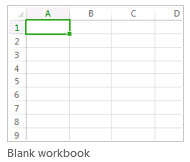
Excel is an incredibly powerful tool for getting meaning out of vast amounts of data. But it also works really well for simple calculations and tracking almost any kind of information. The key for unlocking all that potential is the grid of cells. Cells can contain numbers, text, or formulas. You put data in your cells and group them in rows and columns. That allows you to add up your data, sort and filter it, put it in tables, and build great-looking charts. Let’s go through the basic steps to get you started.
Create a new workbookExcel documents are called workbooks. Each workbook has sheets, typically called spreadsheets. You can add as many sheets as you want to a workbook, or you can create new workbooks to keep your data separate.

For more information about how to apply formatting to a worksheet, see Format a worksheet.
Use AutoSum to add your dataWhen you’ve entered numbers in your sheet, you might want to add them up. A fast way to do that is by using AutoSum.
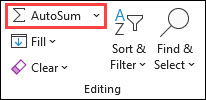
Adding numbers is just one of the things you can do, but Excel can do other math as well. Try some simple formulas to add, subtract, multiply, or divide your numbers.
To distinguish between different types of numbers, add a format, like currency, percentages, or dates.


Pick a number format.
Put your data in a tableA simple way to access Excel’s power is to put your data in a table. That lets you quickly filter or sort your data.

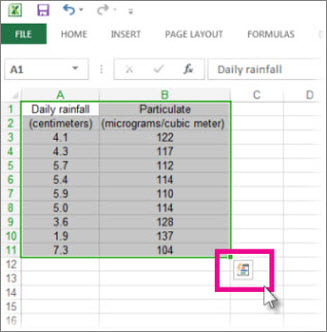
in the bottom-right corner of the selection.
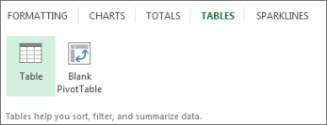
Click Tables, move your cursor to the Table button to preview your data, and then click the Table button.
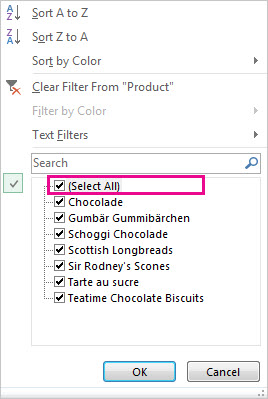
in the table header of a column. To filter the data, clear the Select All check box, and then select the data you want to show in your table.
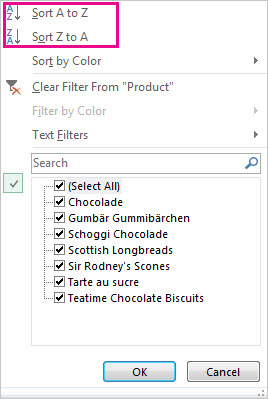
To sort the data, click Sort A to Z or Sort Z to A.
Show totals for your numbers using Quick AnalysisThe Quick Analysis tool (Excel 2016) let you total your numbers quickly. Whether it’s a sum, average, or count you want, Excel shows the calculation results right below or next to your numbers.

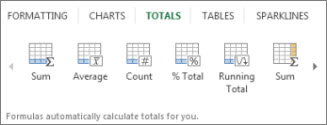
in the bottom-right corner of the selection. Click Totals, move your cursor across the buttons to see the calculation results for your data, and then click the button to apply the totals.
Add meaning to your data using Quick AnalysisConditional formatting or sparklines can highlight your most important data or show data trends. Use the Quick Analysis tool (Excel 2016) for a Live Preview to try it out.

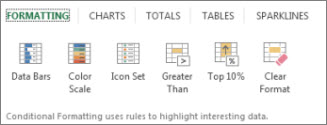
in the bottom-right corner of the selection. Explore the options on the Formatting and Sparklines tabs to see how they affect your data.

For example, pick a color scale in the Formatting gallery to differentiate high, medium, and low temperatures.
Show your data in a chart using Quick AnalysisThe Quick Analysis tool (Excel 2016) recommends the right chart for your data and gives you a visual presentation in just a few clicks.

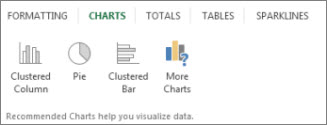
in the bottom-right corner of the selection. Click the Charts tab, move across the recommended charts to see which one looks best for your data, and then click the one that you want.
Note: Excel shows different charts in this gallery, depending on what’s recommended for your data.Learn about other ways to create a chart.
Sort your dataTo quickly sort your data
To sort by specific criteria
 the Data tab" />
the Data tab" />
For more information about how to filter data, see Filter data in a range or table.
Save your work

For more information about how to use add-ins, see Add or remove add-ins.
Find and apply a templateExcel allows you to apply built-in templates, to apply your own custom templates, and to search from a variety of templates on Office.com. Office.com provides a wide selection of popular Excel templates, including budgets.
For more information about how to find and apply templates, see Download free, pre-built templates.